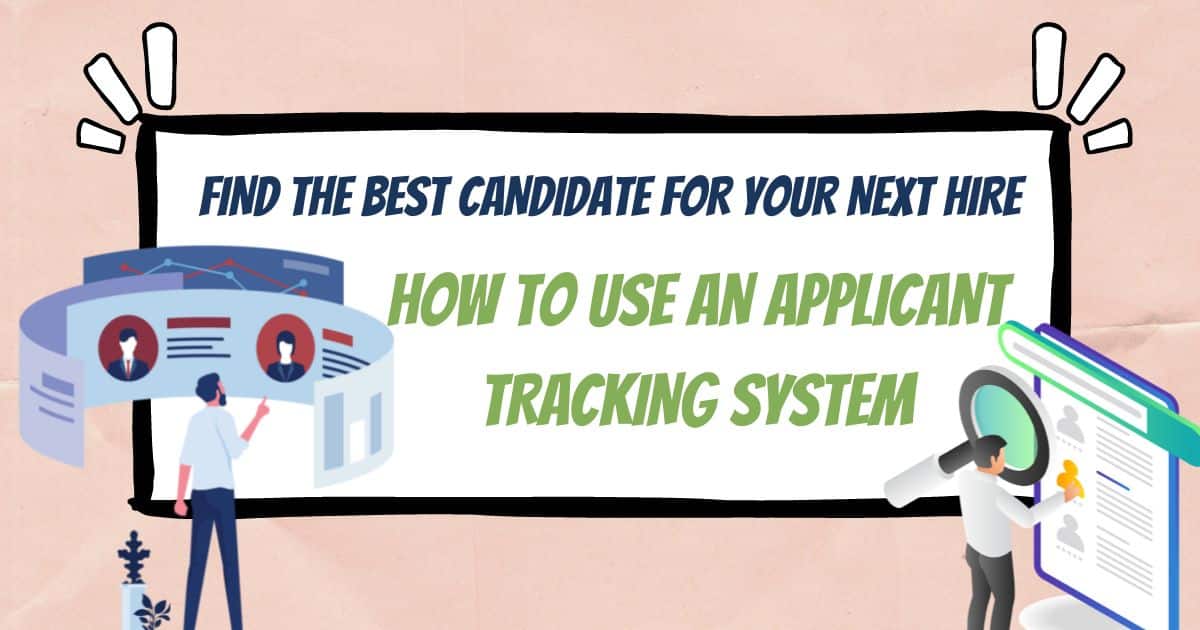How to use an applicant tracking system (ATS) to find the best candidate for your next hire
March 6th, 2023 | 3 min. read
By Shelby Betts

Applicant Tracking Systems are a must in today's high-speed job market. A recent article said that 10 days is the average length of time that a top candidate in any profession is on the job market. TEN days! In a job market like this one, it’s more important than ever for recruiters to be on their game. This is a stressful metric, especially if recruiting isn’t your only responsibility. I know from first-hand experience the sinking feeling of realizing that you let a great candidate slip through your fingers because you couldn’t get back to them before they accepted another position.
If you’re finding it difficult to manage all the resumes you’re receiving, keep track of each candidate's status, and communicate with each of them quickly, then it’s time to look at adding an Applicant Tracking System (ATS) to your recruiting toolbelt. In this blog, we will explore what an ATS is, how it works, and what tools are available to help you find the best candidate for the job.
What is an ATS?
ATS stands for Applicant Tracking System, it is a software application to help companies manage large volumes of resumes and candidate data, track the status of each applicant, and make it easier to find the right candidate for the job. With an ATS, companies can automate many of the manual tasks involved in the recruitment process, such as sending emails to candidates, updating their status, and providing feedback.
How does an Applicant Tracking System work?
An Applicant Tracking System works by organizing and managing resumes and candidate data with a centralized database. When candidates apply for a job, their resume and cover letter are uploaded into the ATS. The system then parses the resume and cover letter, extracting relevant information such as skills, experience, and education. This information is then tagged in the ATS, making it easier for companies to search for candidates based on specific criteria.
Once a candidate's information is stored in the ATS, the system can be used to track the status of each applicant. Companies can easily see which candidates have completed an application, which ones are a good fit for the position, and which ones are not. The system can also be used to send automated emails to candidates, updating them on the status of their application, and providing feedback.
What ATS tools are available? Why should I use them?
Lots of these tools will be specific to the system you’re using, but some of the most common tools include:
- Search and filtering: Search for candidates based on specific criteria such as skills, experience, and education. Notes and tags can be used to mark a candidate for future positions, which is especially useful when building a pipeline of candidates. Maybe you’re talking to a great candidate but they’re only available part-time. Adding a “part-time” tag to their candidate profile makes it easier to search them out later when the time is right.
- Automated emails: Eager job seekers often get discouraged when they feel they’ve been lost in a pile of resumes. Automated emails are a great way to make sure you’re keeping your candidates in the loop. For example, you could set up an automated email so that anytime you mark an application as reviewed, the candidate receives an email letting them know. This creates a better candidate experience and might even put you ahead of the competition!
- Reporting and analytics: Did you know that 23.8 days is the global average for hiring a new employee? Now you know the number to beat! Your ATS will track not only the time it takes to fill a position, but also the source of each candidate. Identifying these trends helps you make data-driven decisions about how long you need to hire someone and where the best place to find them is.
A good Applicant Tracking System will save you time and help you find the best candidate
After you learn how to use the filtering tools correctly, an ATS can help you streamline the recruitment process and make it easier to find the right candidate for the job. Whether you are recruiting for one position or multiple positions, an ATS can help you manage the high volume of resumes, improve the accuracy of your recruitment process, and provide a better candidate experience.
If you’re already a Whirks client, then our Attract & Hire ATS may be the one for you! Learn more here.
Topics: